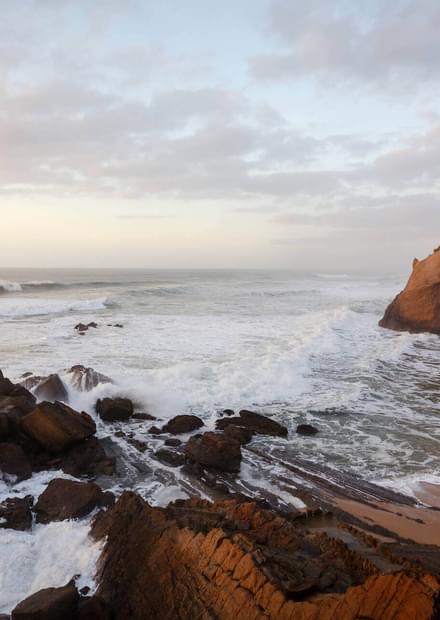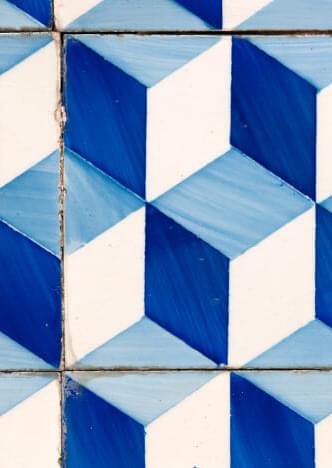Thanks to its flat topography, Aveiro is a perfect city for engaging in walking tours. A destination full of historical landmarks that deserves a detailed visit.
Aveiro railway station
After 20 years of recovery works, the amazing train station of Aveiro finally opens its doors to all visitors and travellers, eager to discover a unique Portuguese tile legacy. A true postcard of this city of light is back!
Apart from many other highlights, the railway station of Aveiro is a true iconic place. Completely covered with blue and white tiles, depicting regional scenes, this amazing building stands out as the most significant collection of outdoor tiles in the city.
The iconic train station of Aveiro has now a shop, where visitors can buy the best regional products. João Mendes Ribeiro is the architect in charge of the fantastic renovation works that truly respect the originality and the richness of the tile panels. The building is open for visits from 10:00 to 18:00 everyday of the week.
Capitania do Porto de Aveiro
The building of Capitania do Porto de Aveiro currently belongs to Aveiro Town Hall. It is also known as “Capitania dos Arcos” and its history is indeed a long one.Initially built as a tide mill, it would later become a supporting building of porcelain factory José Ferreira Pinto Basto, who founded internationally known Vista Alegre brand. Later, in 1903, Francisco Augusto da Silva Rocha remodeled the building in order to lodge the Industrial Drawing School.
Saint Anthony Convent
The Franciscans started their community in Aveiro in 1534. Saint Anthony church was only built during the next century, in baroque taste. Its sumptuous decoration in tally and till of the interior captivates us because of the contrast with the austerity of the stone in the façade.
Misericórdia Church
This is perhaps the best known church in Aveiro because its façade is covered with tile. Among its small blue and white ceramic squares, there is a great stone door, dominated by an image of Our Lady of Mercy. The interior is worth a visit. You will be amazed by its walls covered with tiles, its choir stalls made of tally and its golden and colourful altar pieces.
Carmo Convent
Carmo Convent, created in 1613 by the Barefoot Carmelites Friars, was known mainly because of its educational function when the College of Philosophy was installed in it. The building follows the construction rules of the Carmelite Order, and in its interior we can highlight the retables in gilded wood and the tile frames which stand out in its mannerist stone structure.
Aveiro Cathedral
Aveiro Cathedral is located at the old Dominican convent which is known because it was the first religious community to be established in the city. The church will draw immediately your attention because of its superb façade with its images of the Human Virtues and the imposing bell tower. Inside, the white colour of the limestone dominates and several chapels are decorated in tally, stone and tile from different periods.
Carmelitas Church
A noble family from Aveiro ordered the convent of the Carmo nuns to be built during the 16th century. It took almost 200 years to build and the Carmelitas Church, as it became known, was only finished in the end of the 18th century. The interior of the church is worth visiting because of its almost seductive wealth. The golden colour of the tally is mixed with blue and white tile and it contrasts with the bright colours of the paintings on the celling.
Art Nouveau Museum
The Museum of Art Nouveau in Aveiro is the coolest new stop on the Portugal cultural scene. The museum resides in the Casa Major Pessoa, one of the most architecturally admired buildings in the city. Building design is attributed to architects Silvia Rocha and Ernest Korrodi. On the exterior, extraordinary art nouveau detail is evident in the stone façade as well as the wrought iron embellishments. The building is topped by a noble eagle, a theme that carries through to the interior.
Aveiro Fish Market
It’s a delicious market of very fresh fish. Fish market dates back to late 18th century. By then Aveiro municipality felt the need to organize fish selling, as well as to care for good hygiene conditions. As far as thorough architectural planning is concerned, Aveiro fish market has surely given a major contribute. The iron structure has been recently destroyed in order to build a wholly new one.












